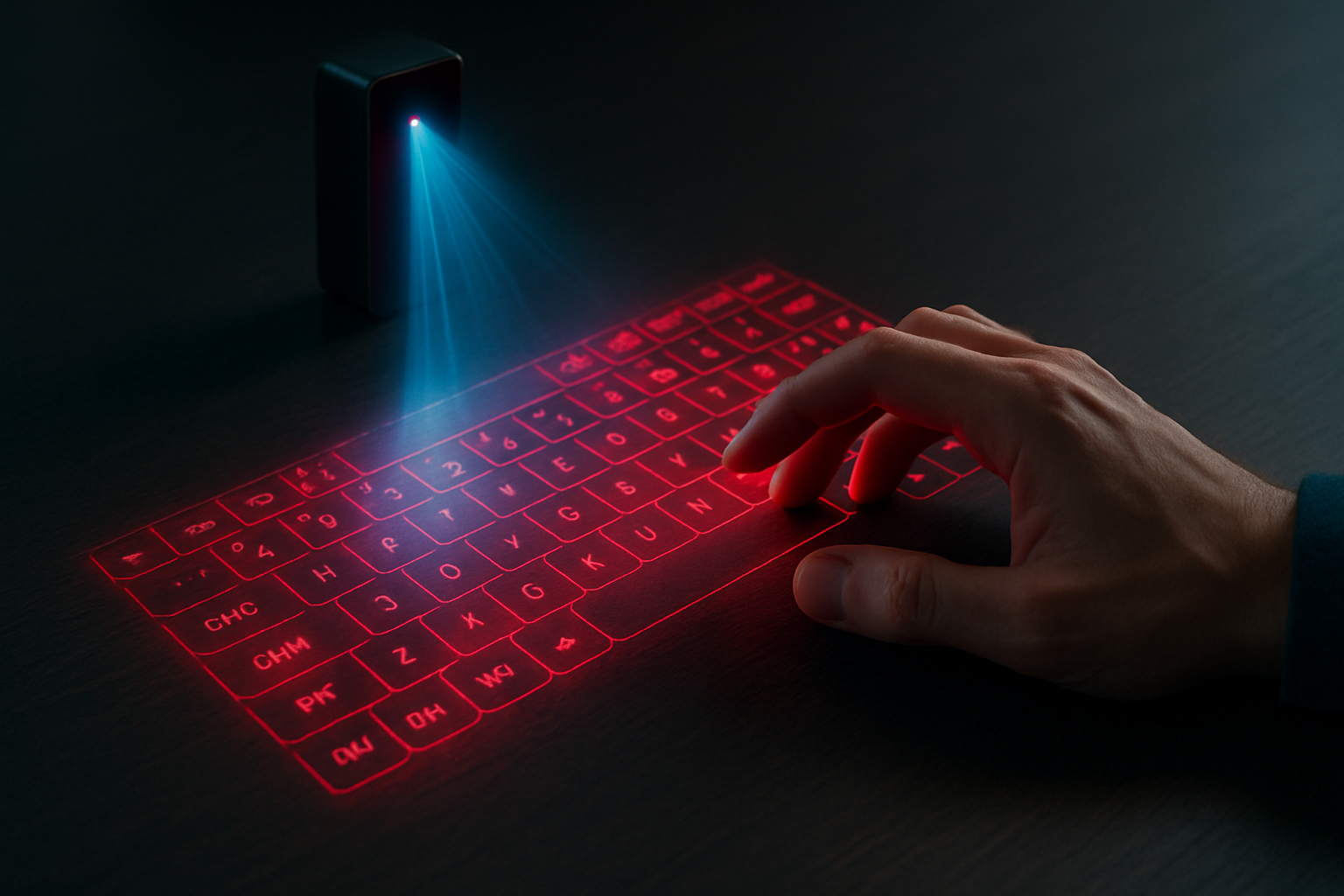Holographic Keyboards: A Glimpse into the Future of Typing
In a world where technology continues to push boundaries, holographic keyboards are emerging as a futuristic solution to our everyday typing needs. These ethereal input devices promise to revolutionize how we interact with our computers and mobile devices, offering a blend of sci-fi aesthetics and practical functionality. As we delve into this cutting-edge technology, we'll explore its potential to reshape our digital interfaces and the challenges it faces in becoming a mainstream reality.

Fast forward to today, and the technology has made significant strides. Modern holographic keyboards utilize advanced laser projection systems coupled with sophisticated motion-tracking algorithms. These improvements have addressed many of the early challenges, paving the way for more reliable and responsive holographic input devices.
How Holographic Keyboards Work
At its core, a holographic keyboard consists of three main components: a projector, a sensor, and a processing unit. The projector casts an image of a keyboard onto any flat surface, while the sensor—typically a camera or an infrared detection system—monitors the projected area for user interactions. When a user “presses” a holographic key, the sensor detects the motion and relays this information to the processing unit, which then translates it into a corresponding keystroke.
This seemingly simple process involves complex algorithms that must account for various factors, including ambient light conditions, surface textures, and the user’s hand position. The latest holographic keyboard systems employ machine learning techniques to improve accuracy and adapt to different users’ typing styles over time.
Advantages Over Traditional Keyboards
Holographic keyboards offer several potential advantages over their physical counterparts. Perhaps the most obvious is their portability—when not in use, they literally disappear, taking up no physical space. This makes them ideal for mobile devices or situations where desk space is at a premium.
Additionally, holographic keyboards can be easily customized. Users can potentially switch between different layouts, languages, or even specialized input schemes with a simple software update. This flexibility could be particularly beneficial for multilingual users or professionals who require specific keyboard configurations for their work.
Another intriguing aspect is hygiene. In a post-pandemic world, the idea of a touch-free input device holds significant appeal. Holographic keyboards eliminate the need to physically contact a shared surface, potentially reducing the spread of germs in public or shared computing environments.
Current Limitations and Challenges
Despite their futuristic appeal, holographic keyboards face several hurdles before they can become a mainstream input option. One of the primary challenges is haptic feedback—or rather, the lack thereof. Physical keyboards provide tactile sensations that help users type accurately without looking at their hands. Replicating this sensation in a projection-based system is a significant technical challenge that researchers are still grappling with.
Accuracy remains another concern. While modern holographic keyboards have improved significantly, they still struggle to match the precision of traditional keyboards, especially for touch typists. Environmental factors such as bright sunlight or uneven surfaces can also interfere with the projection and sensing systems, limiting their usability in certain situations.
Power consumption is yet another obstacle. The constant projection and sensing required for holographic keyboards can drain battery life quickly, making them less practical for mobile devices without significant advancements in energy efficiency.
The Road to Mainstream Adoption
As with many emerging technologies, the path to widespread adoption for holographic keyboards is likely to be gradual. Initial applications may focus on niche markets where their unique advantages outweigh their current limitations. For example, they could find early success in sterile environments like hospitals or cleanrooms, where minimizing physical contact is crucial.
The gaming and virtual reality industries also present interesting opportunities. Holographic keyboards could enhance immersive experiences by allowing users to interact with virtual interfaces without breaking their sense of presence in the digital world.
As the technology matures and costs decrease, we may see holographic keyboards integrated into more consumer devices. Smartphones and tablets could project full-sized keyboards onto any surface, effectively turning any flat area into a workstation. Smart home systems might utilize holographic interfaces to control various devices without the need for physical buttons or touchscreens.
The Future of Typing
While holographic keyboards may seem like a concept straight out of science fiction, they represent a tangible step towards more intuitive and flexible human-computer interactions. As researchers continue to refine the technology, addressing current limitations and exploring new applications, we may find ourselves on the cusp of a significant shift in how we input information into our devices.
The journey from physical keys to projected light is emblematic of the broader trend towards more seamless and adaptable technology. Whether holographic keyboards become the new standard or simply one option among many, they undoubtedly offer a glimpse into a future where our interactions with technology are limited only by our imagination, not by physical constraints.
As we move forward, it’s clear that the way we type and interact with our devices will continue to evolve. Holographic keyboards may well be the next step in this evolution, bringing us closer to a world where the barriers between the digital and physical realms continue to blur.




